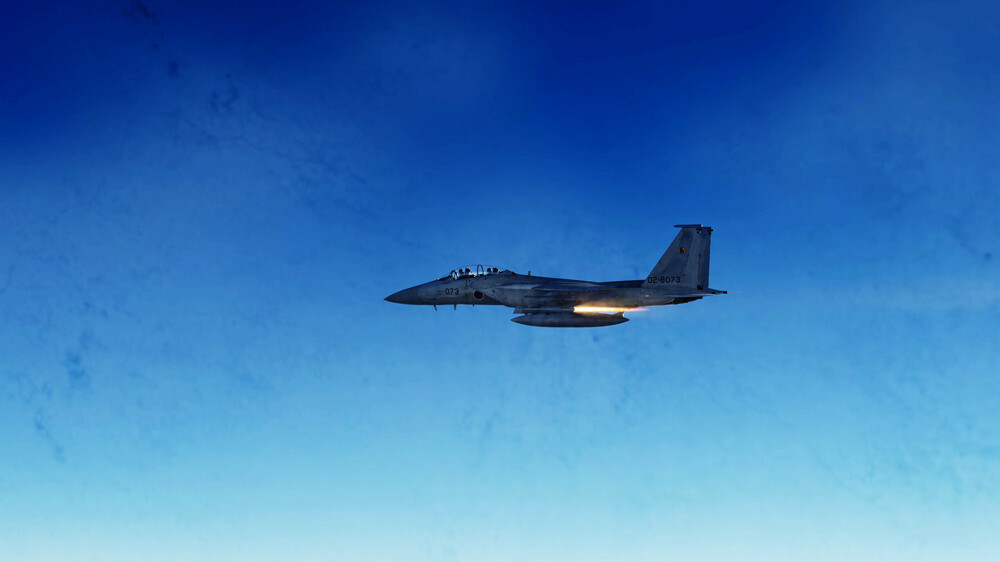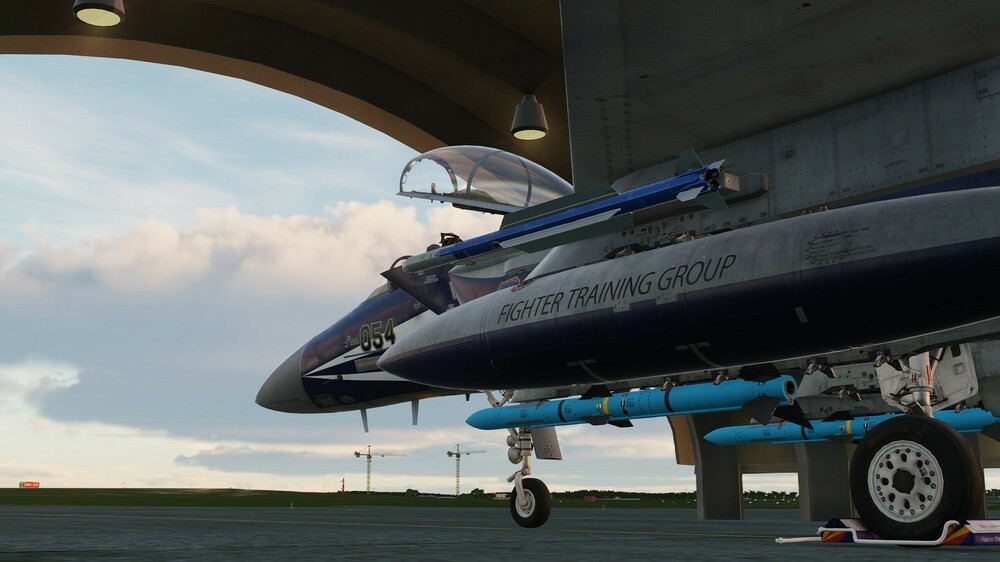-
Posts
98 -
Joined
-
Last visited
Content Type
Profiles
Forums
Events
Everything posted by MagicSlave
-
I got mine yesterday (Finland) Sent from my FP4 using Tapatalk
-

HAD stops locking on targets after a while. BUG or intended?
MagicSlave replied to Snakedoc's topic in DCS: F-16C Viper
Not sure if this is the answer to your problem, but the color on the HAD page does not relate to whether you have the emitter locked or not, but to the state of the threat emitter. Solid red means the threat is emitting in tracking mode and flashing red means threat is emitting in launch mode. Yellow is emitting in search mode and green has not emitted in at least 2 minutes. See manual p. 288. Sent from my FP4 using Tapatalk -
Something is not functioning properly then. I would double check key bindings, make sure that there are no conflicts, and if that does not solve it, make sure "game mode" is not selected in the settings, disable unofficial mods, try a repair or reinstall the module. Sent from my FP4 using Tapatalk
-
What pages are on the MFDs when you try to make them "SOI"? The Castle Switch long press is used to take command of different sensors presented on the MFDs and not every MFD page is a sensor that can be taken command of. MFD pages that can be commanded that way are AA and AG Radar and TPOD (and SIT, when it comes) I think. Sent from my FP4 using Tapatalk
-
Where the HUD FOV limits are in relation to the glass will vary with your head position, as the projection is collimated to infinity and will remain static in relation to distant objects, rather than the combiner glass. I guess to get a definite answer, you would have to ask an SME about the meaning of VV flashing, as there is no explanation in the manual. However: 1) it is pretty important to indicate to the pilot that the VV displayed in the HUD is not accurately representing the true direction of travel anymore:; 2) the other US aircraft also indicate when the true VV is out of FOV, such as "X" superimposed across the VV in F-16C. That is why my bet is that the flashing indicates that the VV is out of HUD FOV. I guess you could check if the flashing continues beyond the optimal landing AOA, for example... This is just my reasoning, I have no sources for this Sent from my FP4 using Tapatalk
- 19 replies
-
- 1
-

-
No, it flashes when true velocity vector would be out of HUD field of view. Sent from my FP4 using Tapatalk
- 19 replies
-
- 2
-

-
Would be interesting to see your results. I haven't flown the Strike Eagle for a while. (Got the F-16 during Christmas sale and WW F-16 throttle and ICP...) Sent from my FP4 using Tapatalk
-
Result could look like that if you are not entirely stable during the release. I think that the computer does not account for changes in dive angle, G etc during the release interval. Sent from my FP4 using Tapatalk
-
Weapon Select Switch Aft (Auto Guns) position selects A/A Master Mode and puts the radar into guns auto acquisition more, and prevents switching to other master modes or radar modes. Sent from my FP4 using Tapatalk
-
Did you have AIM-9P loaded on the jet? And Weapon Select Switch on SRM? Selected weapon is displayed on the lower left corner of the HUD. "S2P" would be Sidewinder, two of them remaining, P-model. Sent from my FP4 using Tapatalk
-
AACQ here means Auto Acq(uisition) switch. Auto ACQ down short returns the A-A radar to search mode from STT, TWS or mini raster. Sent from my FP4 using Tapatalk
-
There is a limit to how many WPs can be shown. I'm not 100% sure, but if I remember correctly, you can work around that limitation this way: "Desired SP number can also be typed into the scratchpad, and then selected by pressing the PB 17. " (Manual p. 408) Sent from my FP4 using Tapatalk
-
TPOD HOTAS controls on manual page 434-435: Auto ACQ switch forward long = snowplow; aft long = space stabilize. I'm not sure but I think those return to STAB? Edit: also input 0 to UFC scratchpad and press PB17 (p. 447).
-
Type a wp number in UFC scratchpad and press PB17 on TPOD MFD page Sent from my FP4 using Tapatalk
-
-
If I understand correctly, they are independent functions. TDC press / Designate designates the point the TPOD is pointing at, at the moment. Note that the designation does not follow the TPOD LOS after that, unless you have the CDES (continuous designation) selected. You can use the auto ACQ switch to enable point or area track modes. That means that the TPOD will track the point or area the pod was looking at when enabling the track. Note that this doesn't create a designation. You have to use the TDC press to designate and can select the CDES, especially if you wan't to have a designation of a moving target, together with point track. Hope this helps. Sent from my FP4 using Tapatalk
-
Thanks, great info! Sent from my FP4 using Tapatalk
-
I was thinking about using the pod in A-A mode, vis id during high speed intercept or something. Or if the speed limit is there always when carrying the pods, powered on or not (which I doubt, but the statement in the book was vague). Sent from my FP4 using Tapatalk
-
AFAIK it is not about the ground radar emitting but rather the antenna rotating. At least IRL. A radar antenna is by design highly reflective of radar energy. Rotating antenna reflects to all directions. Other metal structures such as fences and radio towers etc are also highly reflective. Sorry, I don't have a good autual source to quote on this. Maybe someone knows better and can share? Edit: another point is that fighter radars are really good at filtering out signals from other radars. There are very clever ways to encode your own emissions such a way that you can filter out any other emitters signals. Stimson's Introduction to Airborne Radar is really good resource. The 2nd edition is available free if you google for it.
-
I think the velocity vector flashes when it is outside the HUD field of view. I.e. during landing, if the VV is just below the HUD FOV when slow and high AOA Sent from my FP4 using Tapatalk
- 19 replies
-
- 3
-

-
I think that it's not interference, but rather reflections from the antenna. You get those from all radar dishes, even if they are not emitting. Sent from my FP4 using Tapatalk
-
I tried a simple test: Starting at about 17000 ft MSL (15K ft AGL), about 340 KIAS, MIL power. Pull the jet vertical and keep the nose pointed straight up as the jet decelerates for as long as you can. Let her stall and see how she recovers. First with all CAS ON and then all OFF. The jet feels whole lot more stable with CAS on, almost FBW-like. Holds nose pointed very well, then nose drops when speed is at 20 or so knots. Recovers very smoothly when let go of the stick. Then with all CAS OFF: feels very different, have to use stick and rudders whole lot more to keep nose pointed straight. If you keep her vertical while speed bleeds off, she starts to slide backwards, tail first. Nasty stall and spin. Had to use opposite stick and rudder and gentle touch to get her out of it. Kinda same differences when turning, pulling lot of AOA at 200-300 KIAS. Try it yourself, I think that the CAS ON/OFF is definitely modeled. Sent from my FP4 using Tapatalk
-
Well, "Be Afraid of the Dark" is not official documentation, so there may be mistakes or simplifications. I would place my trust on the materials provided by an SME (Notso). Sent from my FP4 using Tapatalk
-
Quote from "Be Afraid of the Dark" pdf included in the docs folder: "The best patch maps result from mapping at between 2° and 10° grazing angles, as these provide a good mix of horizontal and vertical target returns." Sent from my FP4 using Tapatalk









